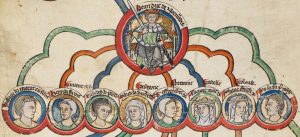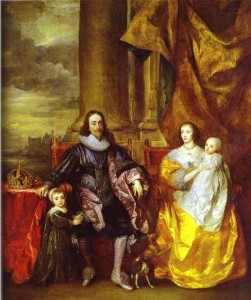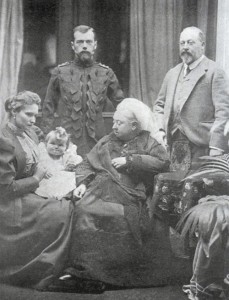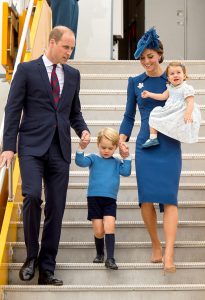Introduction Raising a Royal Child
1 Edgar “the Peaceable” (c. 943-75) and Elfrida of Northampton (c. 945-1001)
2 William “the Conqueror” (c. 1028-87) and Matilda of Flanders (c. 1031-83)

Genealogical chart depicting King Henry II of England and his children
3 Henry II (1133-89) and Eleanor of Aquitaine (c. 1124-1204)
4 Henry III (1207-72) and Eleanor of Provence (c. 1223-91)
5 Edward III (1312-77) and Philippa of Hainault (1314-69)
6 Richard III (1452-85) and Anne Neville (1456-85)

Charles I, Henrietta Maria and their two eldest children
7 Ferdinand II of Aragon (1452-1516) and Isabella I of Castile (1451-1504)
8 Henry VIII (1491-1547) and Catherine of Aragon (1485-1536)
9 Frederick V, Elector Palatine (1596-1632) and Elizabeth of England and Scotland (1596-1662)
10 Charles I (1600-49) and Henrietta Maria of France (1609-69)
11 Peter I “the Great” of Russia (1672-1725) and Catherine I (1684-1727)
12 Anne (1665-1714) and George of Denmark (1653-1708)
13 George II (1683-1760) and Caroline of Ansbach (1683-1737)

Nicholas and Alexandra present their daughter, Olga to Queen Victoria
14 Louis XVI of France (1754-93) and Marie Antoinette of Austria (1755-93)
15 Victoria (1819-1901) and Albert of Saxe-Coburg-Gotha (1819-61)
16 Nicholas II of Russia (1868-1918) and Alexandra of Hesse-Darmstadt (1872-1918)
17 Juliana of the Netherlands (1909-2004) and Bernhard of Lippe-Biesterfeld (1911-2004)
18 Elizabeth II (1926-) and Prince Philip of Greece and Denmark (1921-)
19 Prince Charles (1948-) and Lady Diana Spencer (1961-97) 20 Prince William (1982-) and Catherine Middleton (1982-)

The Duke and Duchess of Cambridge and their children, Prince George and Princess Charlotte arrive in Canada
Epilogue The Future of the Royal Nursery
Acknowledgements
Notes
Further Reading
Index













